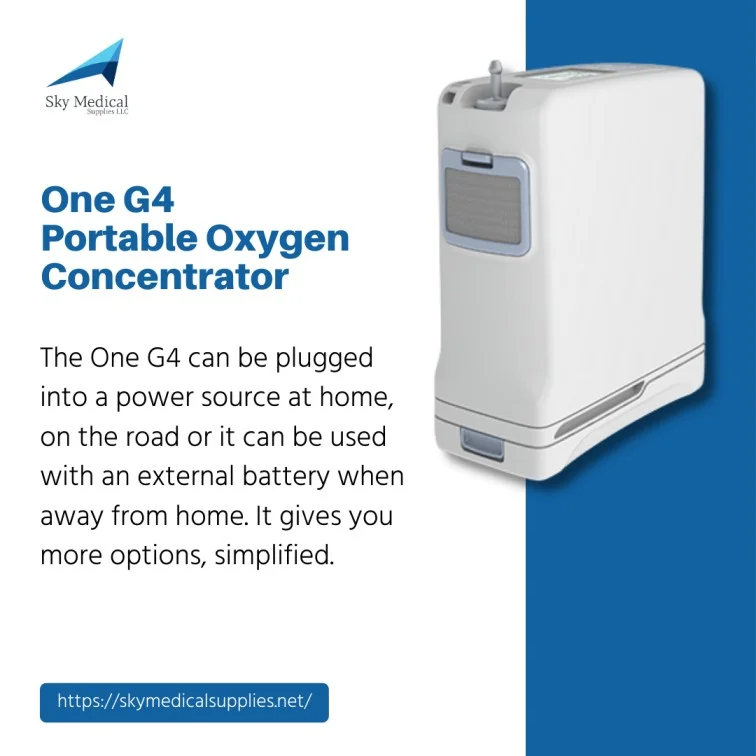COPD patients (chronic obstructive pulmonary disease) know that treating this lifelong lung disease isn't as simple as popping a pill. Various medical devices help you breathe at your best every day, from inhalers to oxygen concentrators.
COPD devices
The technology available today makes living with COPD easier than ever, but there is a learning curve involved. We've compiled a list of common COPD devices and information on how they work to help you get started.
Inhalers
When your doctor diagnosed you with COPD, they probably prescribed you medication to help you manage your symptoms. Therefore, you'll have at least two inhalers in your medicine cabinet: a daily maintenance inhaler and a "rescue" inhaler.
For instance, inhaled bronchodilators open airways to make breathing easier when needed, while corticosteroids treat inflammation in the airways.
compressor Nebulizers
Using a nebulizer involves using a gas jet or ultrasonic waves to convert liquid medicine into a mist. You can inhale tiny aerosol droplets containing drug particles through a mouthpiece or mask.
People with COPD who find it difficult to take their medications via an inhaler may find it easier to use a nebulizer. According to the American Lung Association, nebulizers deliver medication deep into the lungs, where it is most effective.
They also provide useful how-to tips for using them. The best way to benefit from your medications is to take them as directed!
Smartphone apps
You can use your phone as a mini medical assistant. Barry Make, M.D., professor of medicine at National Jewish Health in Denver, CO, says this can help you monitor your COPD symptoms.
And alert you to exacerbations that require your pulmonologist's attention. Dr. Mike recommends an app that allows you to rate your symptoms daily. You can journal about asthma and COPD using Asthma MD.
To avoid airborne irritants, you can use the AirNow app from the Environmental Protection Agency.
Supplemental oxygen
A low blood oxygen level can make it difficult for you to breathe and keep you functioning, so getting extra oxygen on board can help you stay healthy. Various supplemental oxygen devices are available if your doctor thinks you might benefit from them.
Typically, they consist of a tank or concentrator connected to a thin hose with a nasal cannula attached at the other end for delivering oxygen. Additionally, your doctor may prescribe a facemask if you need more oxygen, extra humidity, or have problems with the cannula.
Supplemental O2: compressed oxygen
The metal-tank system usually comes to mind when you think of supplemental oxygen. The most common device for at-home oxygen delivery uses a thin plastic hose and a cannula.
The cylindrical tanks come in different sizes, depending on how much oxygen you need, as your doctor prescribes. To control oxygen flow, your healthcare team will demonstrate how to adjust gauges on the tank. You can refill some tanks at home, but most require filling services from a supply company.
Supplemental O2: liquid oxygen
This O2 delivery system is cordless (no electricity needed) but must care for carefully when filled. Oxygen is compressed and cooled to a very high temperature to make highly concentrated oxygen.
You'll usually carry a stationary storage unit and a portable container. You can burn your skin handling liquid oxygen if you aren't careful while handling the equipment for refilling since liquid oxygen is very cold - it's negative 200 degrees Fahrenheit.
Portable oxygen concentrator
Oxygen concentrators have become lightweight, portable, and easy to use, enabling you to take oxygen support anywhere. Portable Oxygen machines draw air from around you, purify it, compress it, store it in a tank, and deliver the fresh air to your lungs via a cannula.
Portable oxygen concentrators like Inogen POCs are even smaller and more compact, making them ideal for outdoor use. While you're away from an outlet, they run on rechargeable batteries. It is possible to receive oxygen continuously, but most people accept it in pulsed doses or bursts during breathing.
Concentrating oxygen from the air in a room is the function of portable oxygen concentrators (POCs). Unlike traditional tanks, most are compact, lightweight, and do not require refilling.
A POC runs on batteries. Some batteries can last for more than 12 hours. You can also use POCs as power banks by connecting them to your car's AC/DC adapter.
CPAP or BiPAP devices
A CPAP or bi-level positive airway pressure (BiPAP) machine opens airways to treat sleep apnea. According to Dr Ho, CPAP or BiPAP is usually prescribed for COPD patients requiring a device.
Both procedures involve applying a mask over the face, which provides pressure to keep airways open. During an exacerbation, patients with COPD whose blood tests show high levels of carbon dioxide may benefit from BiPAP, according to Dr Ho.
Mucus-loosening devices
COPD patients may have to deal with airway mucus constantly and unwelcomely. Inflatable vests that massage the chest wall gently loosen mucus and help you cough it up and out.
The other option is positive expiratory pressure therapy (PEP), which involves inhaling through a mouthpiece or mask and exhaling against a one-way valve. By doing this, you force mucus to move up your airways.
The Flutter and Acapella devices offer maximum benefit by incorporating PEP and chest wall oscillator therapy. A Lung Flute moves mucus by using low-frequency sound waves.
Bottom line
Inhaled medications can help people with chronic obstructive pulmonary disease (COPD). In addition to portable oxygen therapy, people with lung disease who need extra oxygen can use mobile oxygen therapy devices.
You can take charge of your future by purchasing your own portable oxygen concentrator. POC ownership offers far more benefits than it costs. This treatment helps you treat your specific illness or condition and allows you to travel, work, visit family, socialize, and enjoy hobbies.